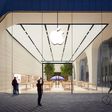
Concord Securities analyst Ming-Chi Kuo has issued a new research note in support of earlier claims that the fifth-generation iPhone will not go into full production until September. Kuo's note also corroborates other reports indicating that the new iPhone will be largely identical to the iPhone 4 in appearance and contain primarily internal improvements.
Specifically, Kuo has heard that the iPhone 5 will include the faster A5 processor already found in the iPad 2, as well as a higher resolution 8 megapixel rear camera. He has also been told that Apple will switch to a Qualcomm baseband for both GSM and CDMA models, along with an improved antenna design.
Kuo has also been told that the new iPhone will go into trial production in August and mass production in September, allowing Apple to reach shipment volumes of between 28 million and 32 million units this year. That would align with previous reports that have indicated Apple plans to make its new iPhone available for sale later than usual this year, likely in Apple's next fiscal year beginning in October.
Kuo's report does, however, apparently assume that the new iPhone will be introduced at Apple's Worldwide Developer Conference (WWDC) in early June, despite that event coming at least three months before the device would become available under this scenario. A number of other reports in recent weeks have indicated, however, that there will be no iPhone introduction at WWDC, with Apple potentially looking to its annual September iPod event for the introduction of the new iPhone.
Kuo suggests that the main selling point of the fifth-generation iPhone will be a significantly revamped iOS 5, although the operating system would presumably be fully or nearly fully supported on the iPhone 4 hardware. Kuo claims that the sixth-generation iPhone will be the model to carry a substantial redesign and could launch in the first half of 2012, even with a later-than-usual introduction of 2011's iPhone model.
Despite a few misses, Kuo has frequently offered fairly accurate information originating from Apple's supply chain, perhaps most notably pinpointing the smaller, thinner MacBook Air ultimately released late last year.























